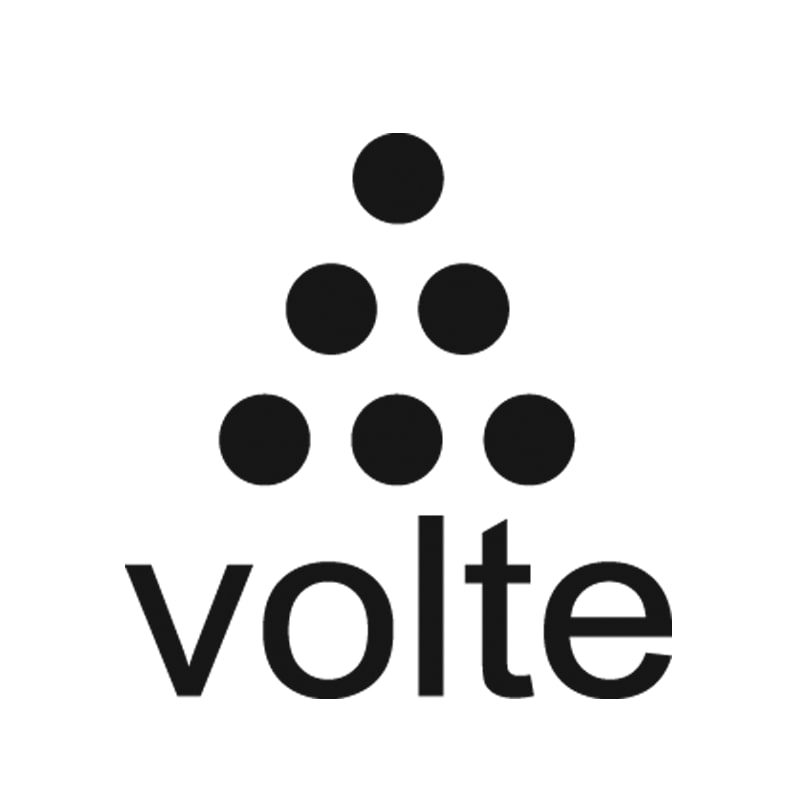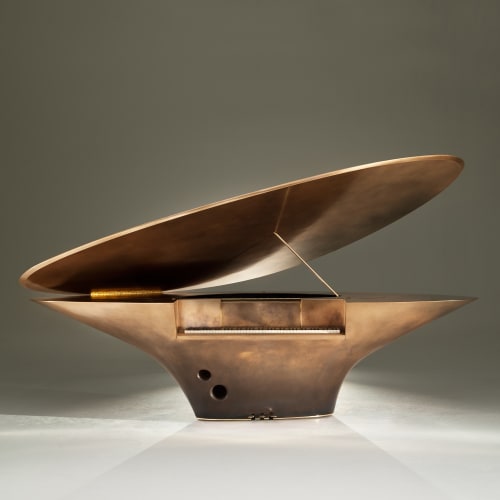For the exhibition that launches the Volte Art Projects’ new permanent space in Dubai, nature, time and technology are brought together in a compelling visual dialogue between ancient memory and near futures. Cutting-edge technologies are used to document and interrogate our constantly evolving relationship to topographies and histories, pointing to alternative ways of being inside - and outside - the world.
As a space that challenges the limitations of boundaries between art and science, design and technology, nature and culture, Volte Art Projects works with a group of innovative artists to realize their monumental visions in space. As a result, all the works converse with architecture and the transformative power of immersive art. The artists build large-scale installations with computer-generated visions that create both real and virtual experiences of the past, present and future, grappling with the nature of time and its metamorphosis.
Artists exhibited are: Sheba Chhachhi, Wim Delvoye, Ranbir Kaleka, William Kentridge, Mario Klingemann, Based Upon, Humans since 1982 and Random International.
Belgian artist Wim Delvoye’s Tower is a colossal 6-metre-high machine in Cor-Ten steel. This showstopperseems frozen in time, marrying a grandiose neo-Gothic dream with architectural engineering. As the artist says: “Gothic was an art outside of time,” a fantasy that he recreates in ornate, computer-driven designs. He paints a history of human ambition, merging the intricacy of historical constructions to the immediacy of high-tech visions. For Stockholm-based Humans since 1982 however, A million times 120 (Tidal), from The Tidal Series moves forward with time. This kinetic sculpture ripples with moving metallic clock-hands in a minute-to-minute recording of the time in 120 gestures. A cross between analogue clocks and digital time-telling, the work forms a natural choreography of cyclical signs against a midnight blue backdrop. This is a space in which the passing of time is no longer abstract.
Sibyl by renowned South African artist William Kentridge is an animated flipbook based on the opera Waiting for the Sibyl, created by Kentridge in 2019 as a companion piece to Alexander Calder’s kinetic work conceived for the stage in 1968, Work in Progress. Kentridge recalls an ancient priestess mentioned by Dante (the Cumean Sibyl), who used to write her prophecies on wind-scattered leaves. A beautiful allegory about our unknown futures, Kentridge’s ink and charcoal drawings on pages shift from the geometric to the figurative.
In Winged Pilgrims: A Chronicle from Asia, New Delhi-based artist Sheba Chhachhi also draws from ancient mythology and fables, especially that of Garuda, an ancient hybrid figure comprising an eagle and a human. She creates a hypnotic, slow-moving visual essay about flight in a palimpsest of Indian sculpture, Chinese ink painting, Japanese ceramics and Persian miniature,all of which depict the syncretism of spiritual traditions and the ruins of civilization across mountains and cities of Asia. Offering an omniscient view that references the migration of birds, the spread of disease, the movement of Buddhist pilgrims and Chinese TV toys, her sculptural installation oflightboxes is very much situated in the contemporary.
Indian artist Ranbir Kaleka’s projected videos on painted canvases take the moving image even further, in a multi-layered Surrealist form that combines the technological with the handmade. His work, The Wind of Heaven is that which blows between a Horse's Ears, is a filmic painting in which a solitary man is faced with his own silhouette, the dripping of time and a white horse.
The beginning and ending of time as we conceive it is interpreted by German artist Mario Klingemann via drafts on Hieronymus Bosch’s wildly inventive Garden of Earthly Delights, which transitions from the birth of humans to paradise before an imagined hell.Klingemann features an AI-derived version of Bosch’s masterpiece, one that is subject to a constant fluidity from a complete re-envisioning of the work to a return to the original painting. Klingemann has created a video titled The Garden of Ephemeral Details Réserve #1, linking AI imagery of a living garden and hybrid forms to Bosch’s surreal universe. A leading pioneer in AI-art and Google and Culture resident, Klingemann uses a suite of algorithms and neural networks to produce his visual experiences in real time, having trained an AI model on Bosch’s work to create a dialogue with the iconic painting in the present.
Moving from imaginary to real landscapes is London-based studio Based Upon, which presents a suite of works for this exhibition. If I had Known Then What I Know Now maps the rugged outlines of the UAE in a dramatic topography that is both a solid bronze cast and a comment on the value of abandoned ideas, evoking and elevating the status of crumpled notes as afterthoughts. While Blow magnifies this gesture in an intricate wall sculpture, The Baby scales up even further in an impressive, sweeping movement that takes the form of a grand piano. Alluding to the orbit of a planet or constellation, this sculpture is based on a single, repeating pattern that decodes the scale of the universe. This is how Based Upon traces cosmic journeys in material. Not only is The Baby a monumental structure crafted from the finest, most durable of materials (the keyboard, made from laminated hardwood, for example, is resistant to any decay), it also incorporates a layer of Based Upon’s trademark Tramazite, made up of a patination of metals and chemical reactions between resins. This multi-layered texture that evokes both the depths and surface of the ocean and a celestial imagining. III (Amma) is a portal-like meditative landscape in limestone that includes oscillating sound and lighting. The artists describe it as an attempt to capture breath within landscape. Akin to the changing surface of the moon, III (Amma) is a site for contemplation about geological time. Both tech-responsive and primitive in form, its surface draws from the 350-million-year-old limestone craggy landscape of Inis Oirr, a remote and desolate island in Ireland, using 3D scans with film and drone photography.
The rawness of nature becomes the destructiveness of industry in Everything and Nothing by Random International. The German duo Hannes Koch and Florian Ortkrass are well-known for their multi-sensory, architectural environments interrogating the limits of human autonomy. In this purely video-based work - their first - two contrary movements seem to be occurring: a relentless force moving forward and an inevitable demolition as a steamroller crushes everything in its path. Commissioned for the Wonder Materials exhibition at the Manchester Museum of Science and Industry in 2016, Everything and Nothing explores the dynamics between matter and machine, and questions our place in a technological world.
In these interconnections between human and technological states of being there is emancipatory potential. Now, more than ever, we need to think of a precarious geography (artistic, virtual, natural) in flux and the role we play in its shaping.






